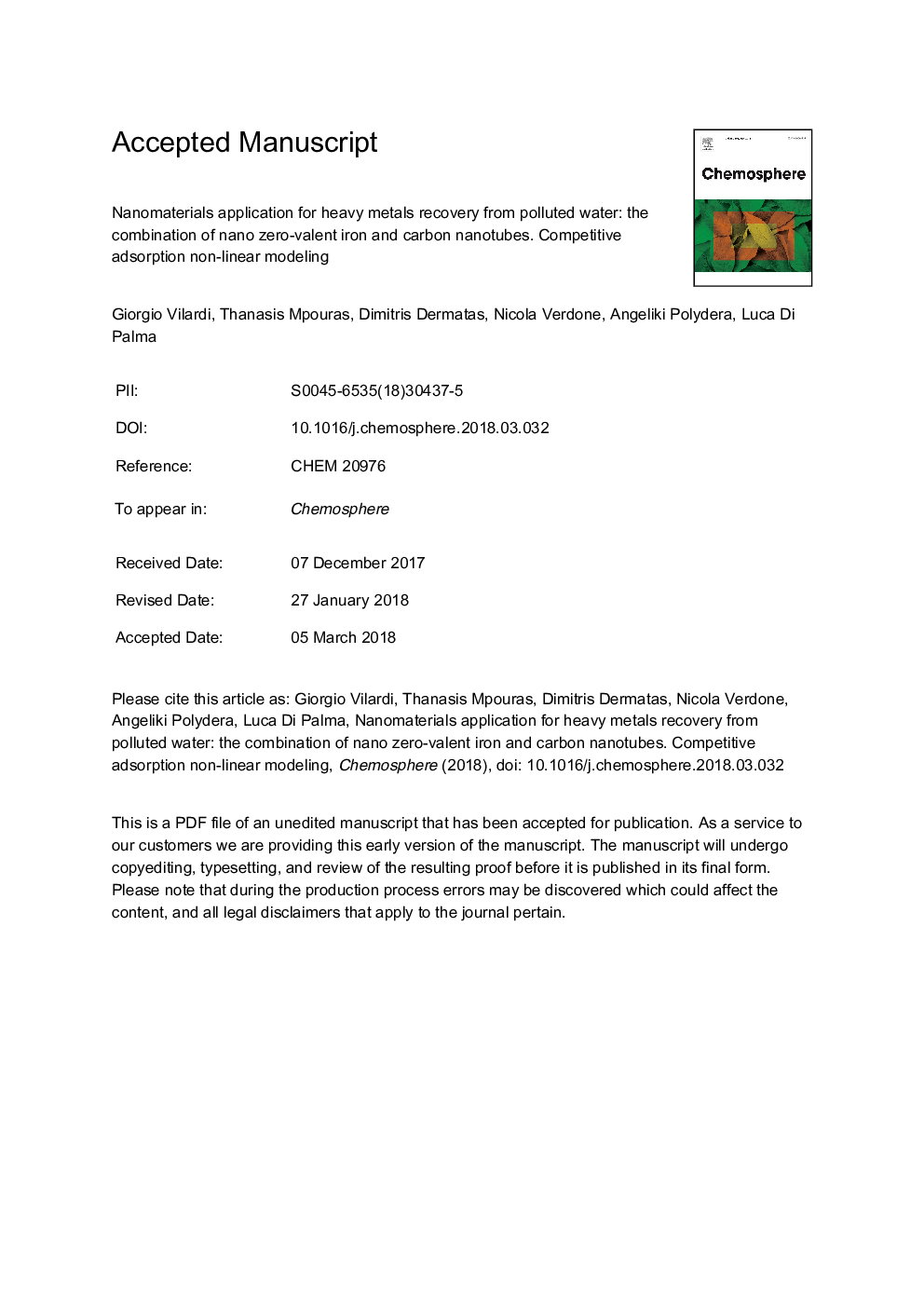| Article ID | Journal | Published Year | Pages | File Type |
|---|---|---|---|---|
| 8851644 | Chemosphere | 2018 | 49 Pages |
Abstract
Carbon Nanotubes (CNTs) and nano Zero-Valent Iron (nZVI) particles, as well as two nanocomposites based on these novel nanomaterials, were employed as nano-adsorbents for the removal of hexavalent chromium, selenium and cobalt, from aqueous solutions. Nanomaterials characterization included the determination of their point of zero charge and particle size distribution. CNTs were further analyzed using scanning electron microscopy, thermogravimetric analysis and Raman spectroscopy to determine their morphology and structural properties. Batch experiments were carried out to investigate the removal efficiency and the possible competitive interactions among metal ions. Adsorption was found to be the main removal mechanism, except for Cr(VI) treatment by nZVI, where reduction was the predominant mechanism. The removal efficiency was estimated in decreasing order as CNTs-nZVI > nZVI > CNTs > CNTs-nZVI* independently upon the tested heavy metal. In the case of competitive adsorption, Cr(VI) exhibited the highest affinity for every adsorbent. The preferable Cr(VI) removal was also observed using binary systems of the tested metals by means of the CNTs-nZVI nanocomposite. Single species adsorption was better described by the non-linear Sips model, whilst competitive adsorption followed the modified Langmuir model. The CNTs-nZVI nanocomposite was tested for its reusability, and showed high adsorption efficiency (the qmax values decreased less than 50% with respect to the first use) even after three cycles of use.
Keywords
Related Topics
Life Sciences
Environmental Science
Environmental Chemistry
Authors
Giorgio Vilardi, Thanasis Mpouras, Dimitris Dermatas, Nicola Verdone, Angeliki Polydera, Luca Di Palma,
